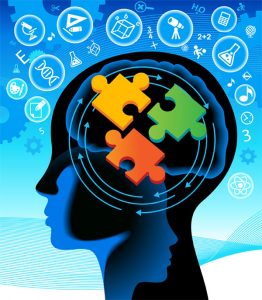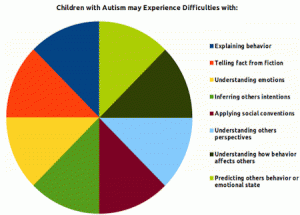क्या आप जानतें हैं की ऑटिज़्म से पीड़ित ६० से ७० प्रतिशत बच्चों में सेंसरी प्रोसेसिंग इश्यूज भी होते हैं जिसकी वजह से वे अपने आसपास के माहौल से आने वाली सूचनाओं का सम्प्रेषण ठीक से नहीं कर पाते, परिणामस्वरूप उनकी कार्यक्षमता, दक्षता एवं भावनात्मक अतर अन्य बच्चों की अपेक्षा स्लो होता है.
आटिज्म से ग्रसित बहुत से व्यक्ति स्पर्श के प्रति अतिसंवेदनशील होते है, वहीँ कई लोगों का प्रोप्रियसेप्शन अर्थात शारीरिक स्थिति एवं स्थान का अभिविन्यास सेंस कमजोर होता है, sometimes an individual might be undersensitive to pressure which makes them difficult to process & analyse that where they belong to in space and what they are doing.
So, people tries to compensate by indulging in physical activities like climbing, banging themselves on the wall or run round.
प्रोप्रियसेप्शन के साथ ही ऑटिज़्म से ग्रसित व्यक्तियों में वेस्टिबुलर इश्यूज भी होते है, which arises problems with balancing & co-ordination. Often, such people will will comfort themselves by giving regular jerks as in rocking, swings, jumping or bumping on toys.! When they do these, in a sensory world that is constantly on the move, they are giving themselves signals that have meaning, so they know what they are doing.
ऑक्यूपेशनल थेरेपिस्ट्स विभिन्न प्रकार के प्रोप्रियसेप्टिव एवं वेस्टिबुलर क्रियाओं द्वारा सेंसरी सिस्टम को टारगेट कर इन सभी प्रकार के डिस्टरशंस को नियंत्रित करना सिखातें हैं so that the nervous system become more organised/regulated and therefore assists & enhance attention and performance of an individual.
सभी ऑटिस्टिक बच्चों का माइंड और बिहेवियर एक समान नहीं होता हैं, they are hyper or hypo sensitive. people on the spectrum find it difficult to process too much incoming sensory information.
इन व्यक्तियों के सेंस ऑर्गन्स तो नार्मल होते हैं, परन्तु इनके मस्तिष्क की प्रोसेसिंग क्षमता सीमित होती हैं, जिस वजह से they face problem in one or more performance area. Children with autism lack the appropriate “filters” to screen out irrelevant information and this can cause meltdown as each input builds and builds without being filtered out appropriately.
किसी भी ट्रीटमेंट प्रोग्राम को प्लान करते समय एक ऑक्यूपेशनल थेरेपिस्ट को अफेक्टेड व्यक्ति की संपूर्ण जीवनशैली के साथ ही उसकी शारीरिक, मानसिक, भावनात्मक, सामाजिक, सभी प्रकार के एरियाज को ध्यान में रखना पड़ता है. OTs uses Holistic approach while desigining therapeutic plan so that all the Performance Areas of an individual will be covered.
In Autism Spectrum Disorder, Occupational Therapist is primarily associated for developing fine-motor co-ordination skills, handwriting training, daily living activities like dressing, grooming, etc. along with focusing on asociated sensory processing disorders, social interaction & communication skills.
The aim of sensory integration therapy is to improve the ability of the brain to process sensory information so that the child will function better in his/her daily activities.
Thus, through a varied range of Therapeutic activities, Occupational therapist can enhance functions essential for daily skills.. know more at http://swavalambanrehab.blogspot.com/2018/11/occupational-therapy-in-autism-spectrum.html
Stay Healthy!
Dr. Pooja Pathak
for swavalambanrehab.com



















